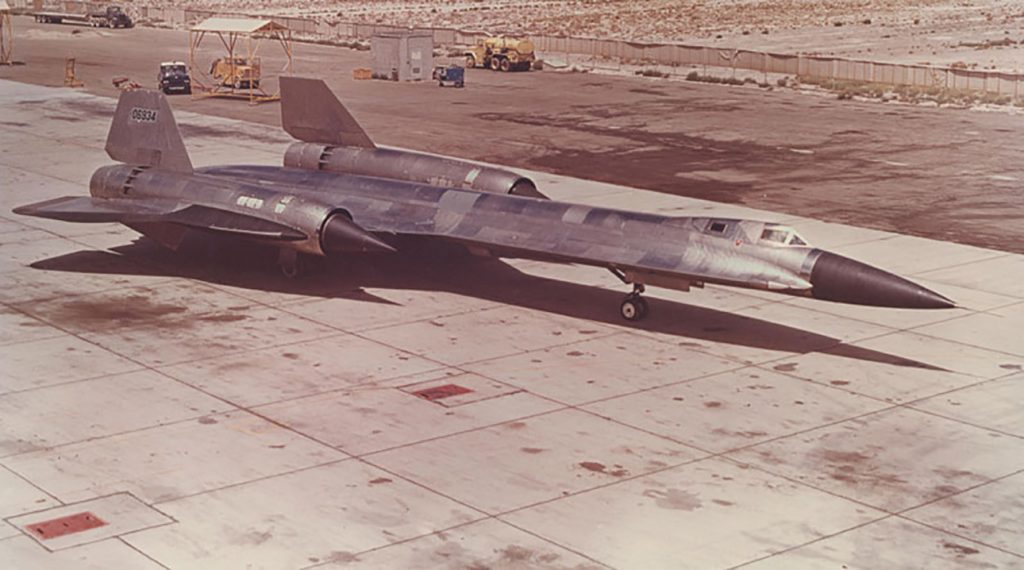For us AvGeeks, the allure of clandestine aircraft and top-secret testing grounds is irresistible, and few stories embody this fascination more than the development of the Lockheed A-12, the precursor to the legendary SR-71 Blackbird. This narrative takes us deep into the heart of Area 51, where revolutionary designs were forged under a veil of extreme secrecy.

The Archangel Emerges: Birth of a Mach 3 Spy Plane
Before the iconic silhouette of the SR-71 graced the skies, there was “Archangel,” the Lockheed A-12. Conceived from the brilliant mind of aviation visionary Clarence “Kelly” Johnson at Lockheed’s Skunk Works, the A-12 first took flight in 1962. This sleek, single-seat reconnaissance aircraft was specifically built and operated by the Central Intelligence Agency (CIA) for high-altitude, high-speed intelligence gathering missions. Capable of reaching blistering speeds of Mach 3.2, the A-12 also incorporated early stealth technology principles, making it a truly groundbreaking aircraft for its time.
Groom Lake’s Secrets: Testing at the Edge of the Envelope
The A-12’s development and rigorous testing took place under an intense shroud of secrecy at Groom Lake Air Force Base, a remote and highly restricted area in the Nevada desert that would later become infamous as Area 51. Within this isolated landscape, Lockheed test pilots pushed the boundaries of aviation, conducting anti-radar studies to evaluate its nascent stealth capabilities, performing critical aerodynamic structural tests to understand its behavior at extreme velocities, and refining the intricate engineering designs that made Mach 3.2 flight possible.
The Price of Progress: Accidents and Conspiracy
The cutting edge of aviation development is often fraught with risk, and the A-12 program was no exception. A staggering six of the fifteen A-12 jets built were lost in accidents during the testing phase. The secrecy surrounding the program extended to managing these incidents. Witnesses to these crashes were reportedly paid substantial sums, around $25,000 each, and were allegedly warned of “dire consequences” should they ever divulge details of what they had seen. This intense secrecy surrounding the A-12’s testing and accidents undoubtedly fueled the myriad UFO conspiracy theories that continue to swirl around the enigmatic Area 51 to this day, blurring the lines between classified technology and extraterrestrial speculation in the public imagination.

Taming the Heat: The Soviet Titanium Connection
One of the most significant engineering hurdles in achieving sustained Mach 3.2 flight was the extreme heat generated by air friction at such velocities. Conventional aircraft aluminum alloys were simply incapable of withstanding these temperatures; they would literally melt. The solution lay in titanium, a lightweight yet incredibly strong metal with exceptional heat resistance. However, in the height of the Cold War, the primary global source of titanium was the Soviet Union. As Ben Rich, the Director of Lockheed’s Skunk Works, famously recounted: “Our supplier, Titanium Metals Corporation, had only limited reserves of the precious alloy, so the CIA conducted a worldwide search and using third parties and dummy companies, managed to unobtrusively purchase the base metal from one of the world’s leading exporters – the Soviet Union. The Russians never had an inkling of how they were actually contributing to the creation of the airplane being rushed into construction to spy on their homeland.” This clandestine procurement of a strategic material from the very nation the A-12 was designed to surveil adds an incredible layer of intrigue to the Blackbird’s origin story.

A Fleeting Service Life: The A-12’s Brief Operational Career
Despite its groundbreaking technology and impressive capabilities, the A-12’s operational service life was surprisingly short. It was deployed for reconnaissance missions over Vietnam and North Korea, providing critical intelligence during these tense Cold War flashpoints. However, after just a single year of service, the A-12 was retired. While some aviation historians and enthusiasts argue that the A-12 possessed superior performance characteristics compared to its successor, the SR-71, it simply didn’t have the longevity to fully demonstrate its potential on the world stage. The reasons for its early retirement were complex, involving factors such as the development and deployment of the two-seat SR-71, which offered advantages in mission flexibility and sensor operation, as well as evolving strategic requirements.

Glimpses into the Unknown: Area 51 Test Footage
Given the extreme secrecy surrounding the A-12 program, authentic test footage from Area 51 is exceptionally rare. However, a few tantalizing clips have occasionally surfaced, offering a fleeting glimpse into the early days of this remarkable aircraft’s development. For AvGeeks, these snippets of history are like finding a lost treasure, offering a tangible connection to a time when aviation technology was pushing the absolute limits, all under the watchful eyes and tight lips of those within the most classified corners of the aerospace world. The legacy of the A-12, though brief, remains a vital chapter in the story of high-speed reconnaissance and the enduring mysteries of Area 51.









